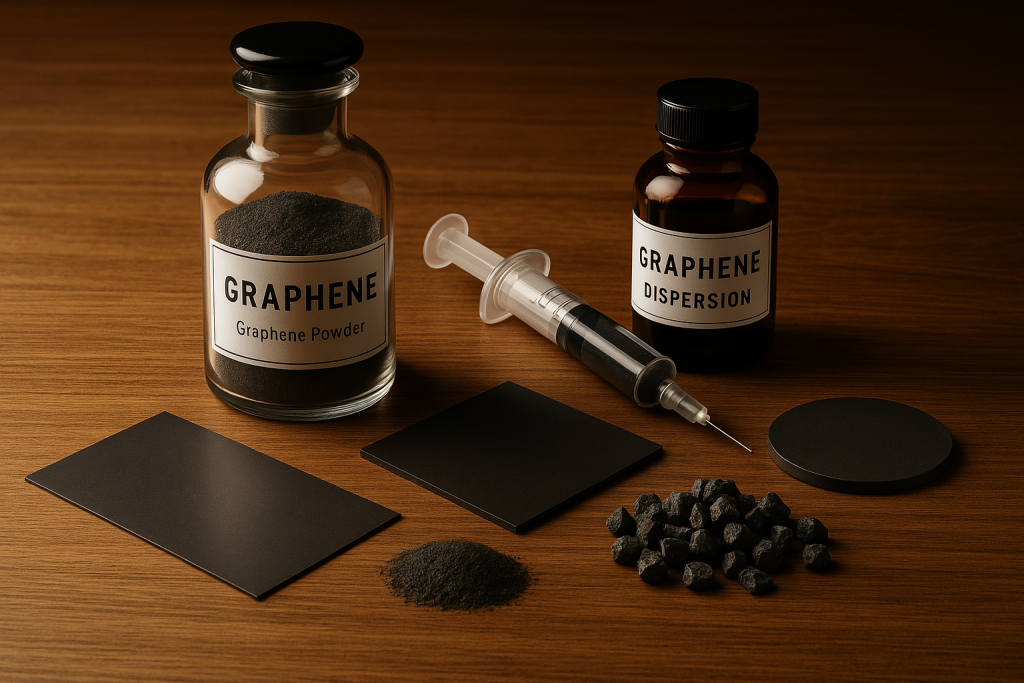Innovate Your Business with Graphene – Costs and Benefits
In the era of material innovation and sustainability, many entrepreneurs and researchers are asking: is it worth investing in graphene technology? As industries from electronics to construction and energy seek advanced solutions, graphene—a one-atom-thick layer of carbon with extraordinary properties—is emerging as a game-changing material. But is the return on investment justifiable? And how can it reshape your business?

Whether you’re launching a new venture or upgrading your current product line, adopting graphene-based materials could be the catalyst for high-value performance, durability, and energy efficiency. From graphene-enhanced coatings to conductive composites and thermal management systems, this nanomaterial is setting a new standard in material science.
What Is Graphene and Why Is It Revolutionary?
Graphene is a single layer of carbon atoms arranged in a two-dimensional honeycomb lattice. It’s known for its high electrical conductivity, mechanical strength, light weight, and thermal stability. These properties make it ideal for a wide range of applications such as:
-
Conductive inks and flexible electronics
-
Reinforced plastics and rubbers
-
Energy storage (supercapacitors and batteries)
-
Anti-corrosion and thermal coatings
-
Biomedical and sensor applications
If you’re seeking to future-proof your products and stay competitive in a fast-changing market, integrating graphene materials could be a strategic move.
Is It Worth Buying Graphene Products in 2025?
The question is no longer “What is graphene?” but “How can it boost my business?” For many companies, the decision to invest in graphene raw materials, graphene oxide, or graphene-enhanced composites is becoming increasingly relevant. Here’s why:
Cost vs. Value
Graphene materials can range in price depending on purity, form (powder, film, dispersion), and production method. While higher-quality graphene may seem expensive at first glance, it often replaces multiple traditional additives, enhances performance, and extends product life—making it highly cost-effective over time.
-
Graphene powder: ~$50–200/kg depending on grade
-
Graphene oxide (GO): ~$100–500/kg depending on purity
-
Functionalized graphene: Higher cost, but tailored for niche applications
Profit Potential for Business Owners
Incorporating graphene into your product line opens up premium pricing opportunities and access to advanced markets. Businesses already using graphene report improvements in product performance, brand differentiation, and customer loyalty. For example:
-
Coating companies enhance anti-corrosion lifespan by 3–5x
-
Plastics processors create stronger, lighter parts with minimal loading
-
Textile companies create antibacterial, anti-static smart fabrics
-
Battery developers improve energy density and charge cycles
By using graphene-based additives, many small-to-medium enterprises are able to expand into high-tech markets with scalable production models.
A Researcher’s Dream or a Business Necessity?
Once reserved for laboratories, graphene has now entered mainstream industrial use. For researchers, it’s an exciting material for next-generation developments. For companies, it’s quickly becoming a value-adding component.
However, graphene is not a one-size-fits-all solution. Success lies in understanding the right type of graphene (e.g., CVD film, rGO, GO, GNP) and how it performs in your specific matrix or system.
Ease of Adoption and Learning Curve
Graphene integration is easier than ever. Thanks to standardized products, dispersion services, and technical consulting, companies can begin trials with sample quantities and scale as they verify performance.
Working with experienced suppliers is key. It reduces trial-and-error costs and provides insight into dosage, compatibility, and process optimization—saving time and R&D expenses.
Maintenance and Supply Chain Stability
Unlike laser machines or physical assets, graphene products require minimal maintenance. However, consistency is key. Be sure to partner with a reliable manufacturer offering:
-
Batch-to-batch quality control
-
Technical datasheets and support
-
Scalable production and delivery timelines
Long-term collaborations ensure stable supply, price predictability, and co-development opportunities.
Who Should Invest in Graphene – Hobbyists or Industry Professionals?
Startups & Innovators
If you’re an early-stage company or a product innovator, graphene offers a way to differentiate your products in a saturated market. It enables smart packaging, energy materials, biosensors, and more—with minimal material loadings.
Manufacturers & Industrial Players
For companies in construction, coatings, electronics, composites, or automotive sectors, graphene offers real, measurable improvements in conductivity, strength, and heat resistance. With regulatory approvals and industrial protocols in place, it’s easier than ever to bring graphene-enhanced products to market.
What’s the ROI of Graphene for Small Businesses?
Initial Investment vs. Long-Term Gains
Start small with 100–500g samples and basic formulations. Once validated, scale to kilograms or tons. The ROI lies in performance gains, product lifetime extension, and premium pricing ability.
For example:
-
A graphene-enhanced coating may cost 20% more but last 300% longer
-
A plastic part may be 30% lighter but just as strong—saving material and logistics costs
-
A supercapacitor with graphene may charge in seconds instead of minutes
High Profit Margins and Sustainability Credits
Many graphene-enhanced products are eligible for green labels or R&D tax credits, increasing both profit margins and brand value.
Portable Use vs. Industrial Integration
Not every business needs to set up a graphene lab. Here are your options:
-
Portable/outsourced use: Buy masterbatches or concentrates from suppliers. Easy integration for SMEs.
-
In-house industrial use: Larger volumes for consistent production lines, requires better material handling and dispersion know-how.
Your choice depends on budget, technical ability, and scale of operation.
Conclusion: Is Graphene a Smart Investment?
If your business values innovation, efficiency, and sustainable performance, then investing in graphene is no longer optional—it’s strategic. While graphene adoption requires an understanding of material behavior and processing, the long-term benefits are substantial.
Explore, experiment, and engage with expert suppliers. The graphene revolution is underway—don’t miss your chance to be part of it.

